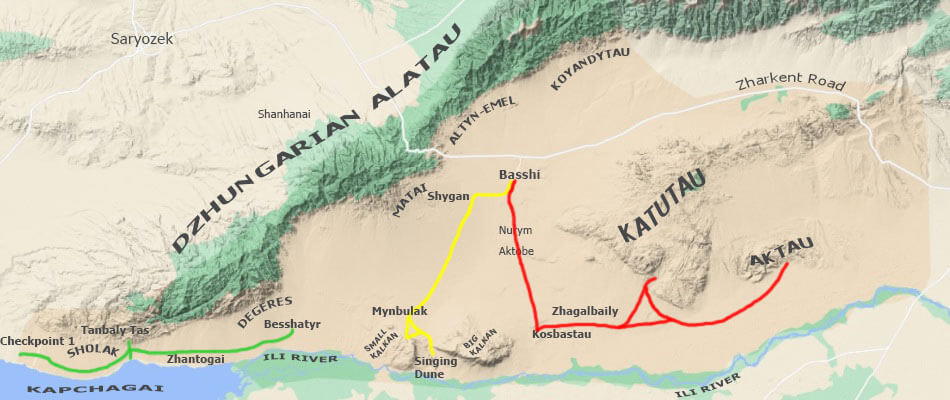Distance: 35 km one way (Checkpoint 1 - Besshatyr Mounds, the route is marked in green on the map).
Route: Checkpoint 1 → 17 km → Tanbaly Tas Petroglyphs → 9 km → Zhantogai post → 9 km → Besshatyr Mounds → 35 km → Checkpoint 1.

Distance: 35 km one way (Checkpoint 1 - Besshatyr Mounds, the route is marked in green on the map).
Route: Checkpoint 1 → 17 km → Tanbaly Tas Petroglyphs → 9 km → Zhantogai post → 9 km → Besshatyr Mounds → 35 km → Checkpoint 1.


Your Guide to Altyn-Emel National Park